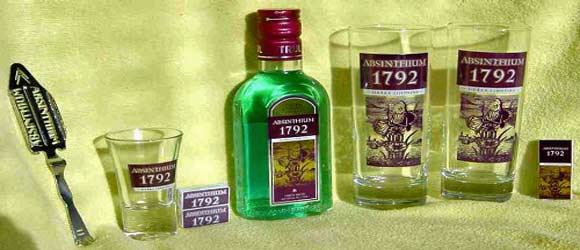

When, in 1904, a Swiss laborer killed his family after drinking absinthe, it was the last straw. Their ‘proof’ was found by injecting it into mice’s brains however, this obviously isn’t how humans consume it,” explains Berthelot, rolling her eyes. “The ‘dangerous’ ingredient was thought to be the thujone in the wormwood plant. Chilling posters from this time-also on display-made it clear that the Green Fairy would spell certain doom for all who dared to consume it. Absinthe’s consumption was soon being vigorously campaigned against by the church and the authorities. According to the museum’s cultural liaison officer, Elise Berthelot, absinthe’s popularity didn’t go down well with people in the wine trade, especially as the local vineyards were suffering from an insect blight that was pushing prices up. Today, at the Pontarlier Museum, a whole floor is given over to the drink. By the end of the 19th century, there were 25 distilleries in and around Pontarlier producing absinthe and providing a living for some 3,000 of the town’s 8,000-odd inhabitants. Its ties with absinthe are strong, and by all accounts the town was once awash with the stuff. My journey begins in Pontarlier, a laid-back town at the foot of the Jura Mountains in eastern France. ( Related: Here are 10 cities around the world known for their cocktails, beer, and wine.) An undeserved bad rap Dozens of small, family-run distilleries are blending their botanicals in the traditional absinthe areas of Switzerland and France. Yet for all the industry’s fondness for nostalgia, it’s also looking to the future and is enjoying a renaissance not unlike the gin revolution in the United Kingdom. The moment the water is added, the spirit turns cloudy, like pastis.Īlthough seldom encountered in the region’s watering holes, the sugar-and-spoon ceremony is a big part of the experience at the bars and tasting rooms of local absinthe distilleries. From this, ice-cold water is dripped through a sugar lump perched on a slotted spoon lying on the rim of a glass of absinthe. Traditionally, it’s served à la Parisienne-an elaborate ritual centered around an absinthe fountain (a large, ornate jar with spigots, resting on a stand). Here you find the good stuff: a refreshing spirit distilled with up to 10 botanicals-including aniseed, mint, and lemon balm-to disguise the bitter taste of the key ingredient, wormwood. My trip to absinthe’s heartland on the French–Swiss border has convinced me that the drink’s notoriety is undeserved. Switzerland legalized the spirit in 2005, and France did so in 2011 (though France had permitted the sale of absinthe under a different name since 1988). I half expect the police to jump out and arrest us, but this is all aboveboard. It was at tree-shrouded springs like this that absinthe was covertly sipped during the ban, explains Yann Klauser, head of the local absinthe museum, Maison de l’Absinthe, as he adds spring water to his shot glass. Wormwood plucked from an on-site garden dries in the building’s attic before being used to make absinthe. I’m standing in a forest at Fontaine à Louis, a spring-fed woodland fountain in the Swiss Jura, the region where absinthe originated. My first taste occurs a world away from any cocktail bar.

It’s true that absinthe, with an alcohol content typically ranging from 50 to 60 percent, isn’t for the fainthearted, but in moderation it can be enjoyed just like any other spirit.

2 or a flaming shot knocked back by fearless hell-raisers. For nearly a century, its toxic reputation remained.Įven in places where it wasn’t banned, absinthe has always been something of a daring novelty-an edgy ingredient in cocktails like the Sazerac and Corpse Reviver No. Then, following a notorious 1904 incident in Switzerland, the spirit was banned in that country and many others. During the heady days of the belle epoque, La Fée Verte (The Green Fairy) acquired a reputation as the mind-bending tipple of choice for van Gogh, Zola, Rimbaud, Toulouse-Lautrec, and a host of other bohemian artists and writers active in Paris. Absinthe is still a drink that strikes fear into the heart of some liquor lovers.


 0 kommentar(er)
0 kommentar(er)
